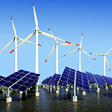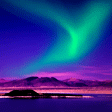- Home >
- Our Actions >
- Ambassador report
5
Comments
URBAN HEAT ISLAND- ITS EFFECTS IN UAE |
|---|
|
An urban heat island, or UHI, are basically the densely populated areas where buildings are constructed upward, very close together due to lack of space for the area to expand. The energy generated by the day to day activities of the people there vehicles running there makes Urban heat Island much more warmer than surrounding rural areas. Building materials used in the construction are usually very good at insulating, or holding in heat but it is a 'Waste heat'— heat that escapes insulation has nowhere to go. It lingers in and between buildings that in turn contributes to a UHI. These negative impacts are all interconnected and have a ripple effect on each other. In the United Arab Emirates, a higher urban temperature results in a significant increase in air-conditioning use — an energy expense that currently accounts for 60 percent of annual and 75 percent of peak-day electricity use in Abu Dhabi. Since most of the country?s air-conditioners run on electricity generated by natural gas-fired power plants that emit heat-trapping greenhouse gases into the atmosphere, reducing cooling load would decrease the country?s carbon footprint, contributing to the UAE's efforts to achieve a low-carbon, sustainable, and resource-efficient future. There are many other ways that UAE can reverse its urban heat island effect, including increasing cooling systems' efficiency, adding vegetation to buildings (such as garden-top roofs and garden walls), and cooling paved surfaces with highly-reflective paint, to name a few. Mitigating Abu Dhabi's heat island effect and rising temperatures is critical to reducing the country's high energy costs and carbon footprint. The Masdar Institute-MIT microclimate model presents an innovative, low-cost approach to optimizing Abu Dhabi?s smart infrastructure systems through a tool that enables city planners to design a cooler, more productive city, which will in turn increase the city?s competitiveness and prosperity. Through this computational model, planners will be able to run several ?what-if? scenarios to determine the optimal combination of various heat-reducing strategies to achieve the greatest temperature reduction in Abu Dhabi's downtown, which will promote a more sustainable, thermally comfortable city infrastructure that could significantly improve city-dwellers' productivity and health. Of all the areas assessed in UAE, the coolest were mangrove forests, which had average summer temperatures 5'C cooler than that of the built-up areas. The obtained results have shown that the close presence of mangroves to urban areas contributes to the reduced overall temperature in UAE This further strengthens the value and importance of mangroves, which also are the nurseries for fish and a haven for migrating birds. Energy efficient construction, landscaping, road networks, and climate specific urban planning can bring significant energy savings and reducing its ecological footprint. http://global.mit.edu, National Geographic |
|
|










 Previous : A visit to flood affected Madi...
Previous : A visit to flood affected Madi...









5 Comments
need to take proper step
Posted 02-02-2018 17:04
horrible
Posted 02-02-2018 17:03
Manav, thank you for your report. One can grasp the basic information about Urban Heat Island in this report. Also it was interesting to read how the situation is in UAE. Let's see how further UAE succeeds in dealing with Urban Heat Island.
Posted 21-08-2017 01:03
Hi Manav! Thanks for sharing your report on UHI:)
Your report well explains the basic concept of UHI and attempts to deal with it.
Hope these attempts would work well so that things could get better!
Posted 20-08-2017 20:18
Thanks for the informative article.
Posted 19-08-2017 14:53